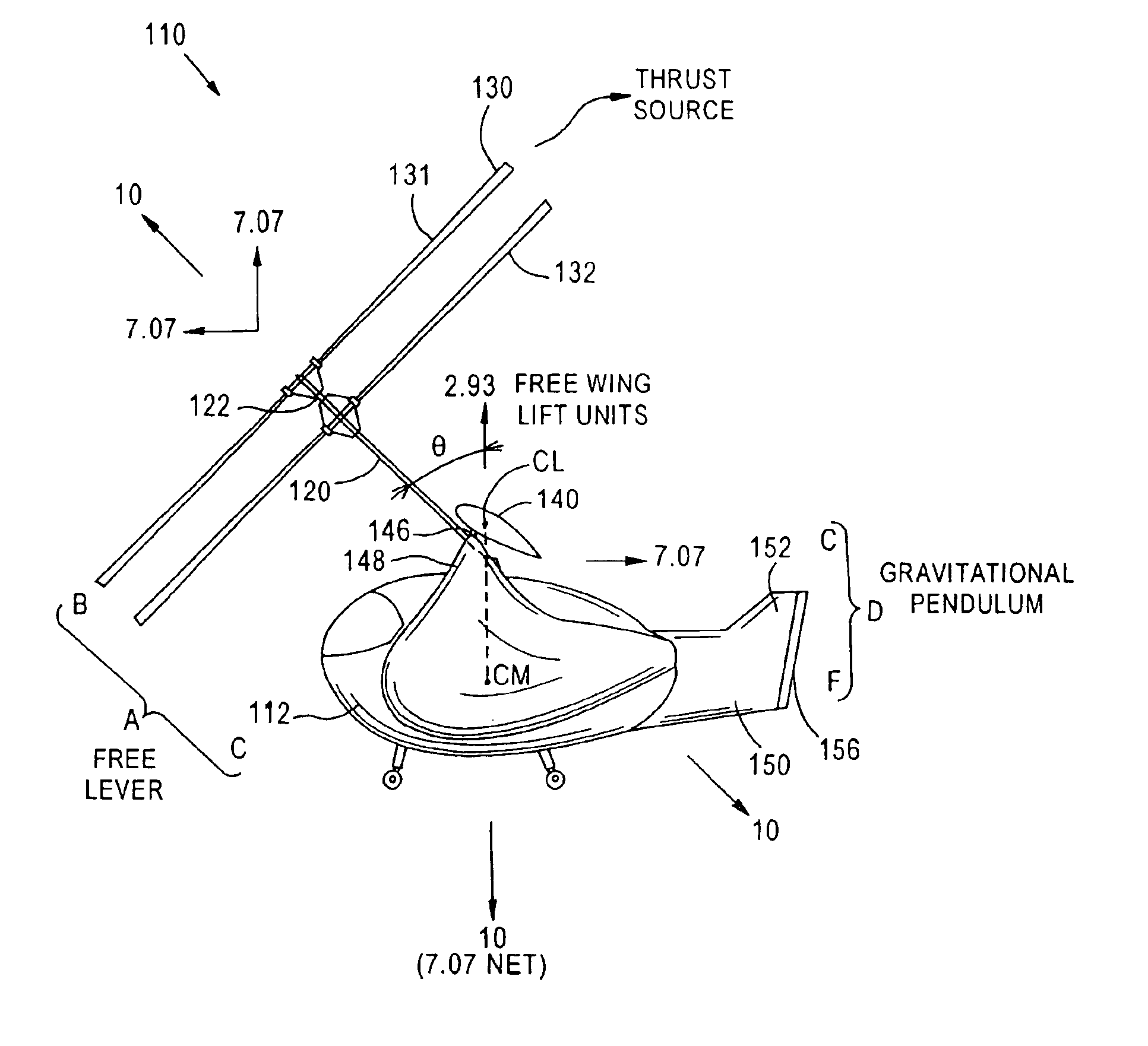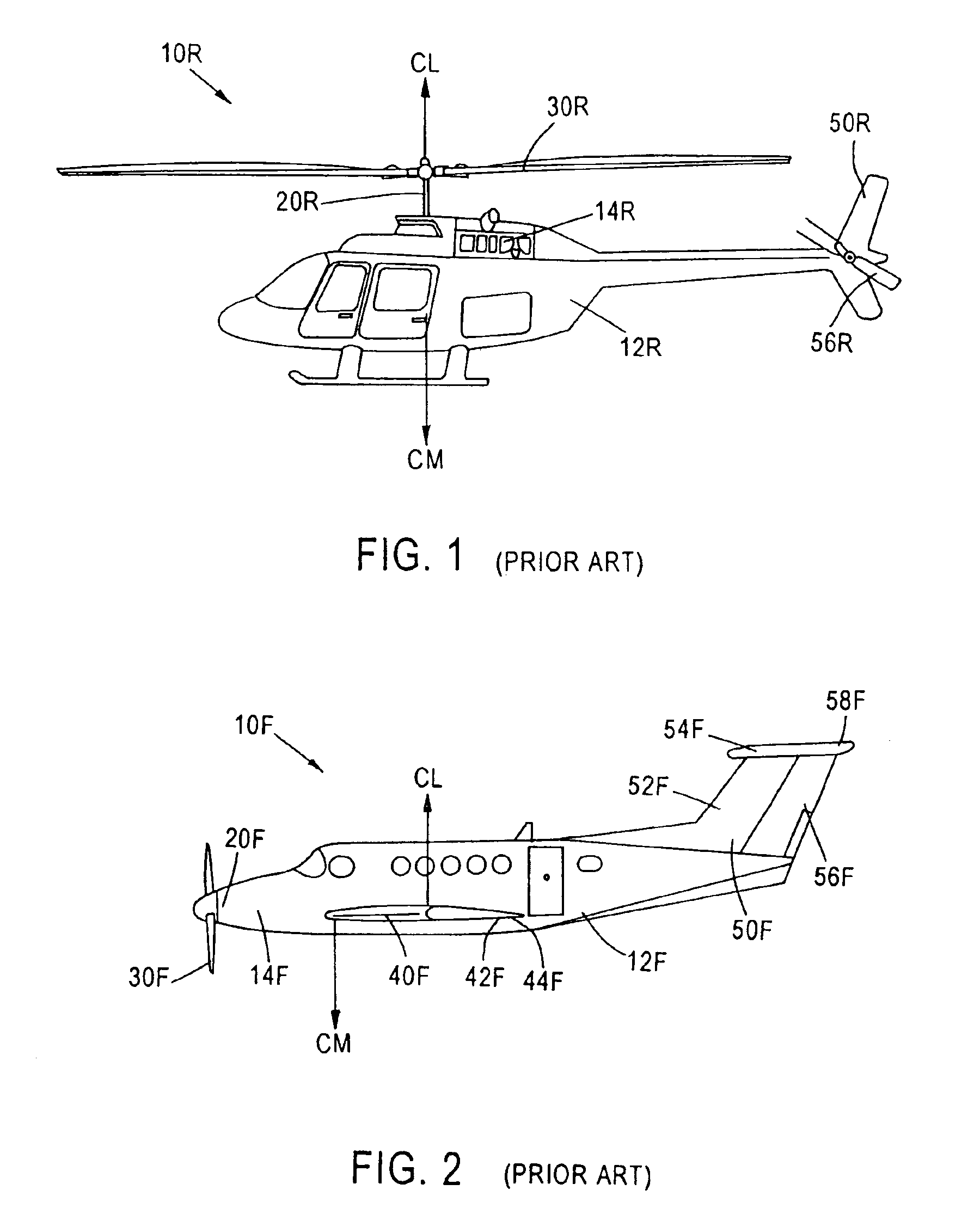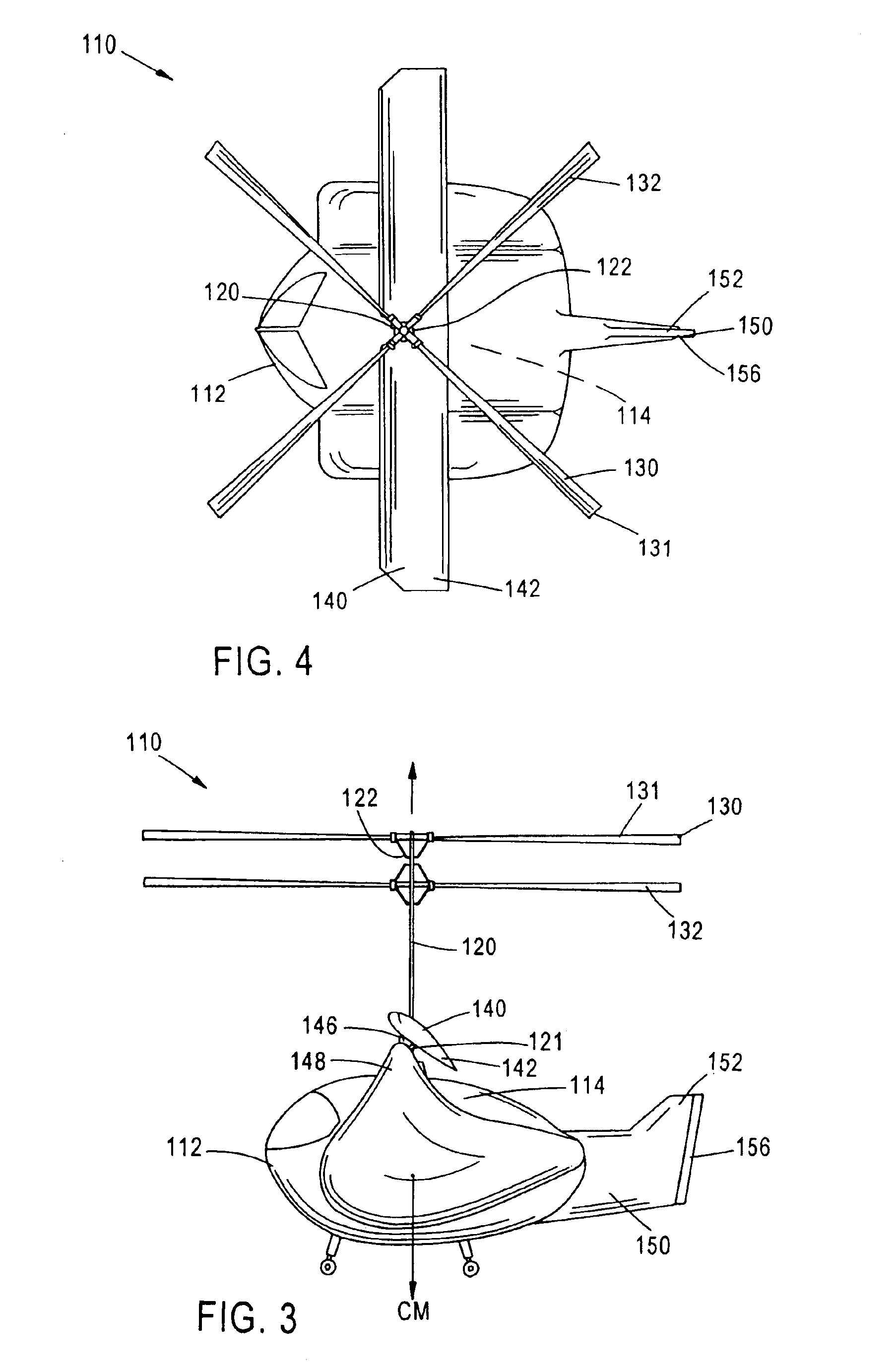Control of an aircraft as a thrust-vectored pendulum in vertical, horizontal and all flight transitional modes thereof
a control system and aircraft technology, applied in the field of aircraft, can solve the problems of inherently unstable aircraft, counterbalance the static forward center of mass, and inability to stabilize fixed wing aircraft, and achieve the effect of reducing the net gravitational for
- Summary
- Abstract
- Description
- Claims
- Application Information
AI Technical Summary
Benefits of technology
Problems solved by technology
Method used
Image
Examples
second embodiment
FIGS. 15-23 are illustrations of the present invention wherein the rotor is replaced with jet engines 214 which can also be prop engines, etc. In this embodiment, two free lever shafts 220 each supporting one jet engine 214 are used. It is, however, within the scope of the present invention to provide any other number of free lever shafts and jet engines.
Each jet engine 114 is coupled through one free lever shaft 220 extending between a proximal end 221 and a distal end 222. The proximal end 221 is pivotally supported by the fuselage 212 via elements 260, 270.
first embodiment
The improved aircraft 210 in this embodiment also includes a wing 240, which is preferably a free wing like the free wing illustrated in FIGS. 3-11 of the Preferably, the free wing 240 includes plural ailerons 242 for lateral control in horizontal flight of the improved aircraft. The angle of attack of the free wing 240 may be adjusted and the lateral control provided during horizontal flight through the use of plural elevons. Freewing 240 is connected to a supporting portion 248 of fuselage 212 for free rotation about a spanwise axis 246. The improved aircraft 210 further includes tail section 250 rigidly secured to the fuselage 212 having a vertical stabilizer 252 and rudder 256.
The improved aircraft 210 functions similarly to the aircraft 110 of the first embodiment. In particular, when the thrust generated by jet engines 214 is vectored, e.g., as shown in FIG. 20, free lever shaft 220 is caused to freely pivot to seek a new dynamic equilibrium as illustrated in FIG. 21. Prefera...
third embodiment
FIGS. 24-30 show the present invention which is basically similar to the first embodiment. In particular, aircraft 300 is illustrated as being stationary on ground 2400 prior to taking off. Aircraft 300 includes fuselage 2415, free wing 2414, wheels or landing gear 2402, 2404, and free lever shaft 2416 having a proximal end pivotally supported by the fuselage and a distal end supporting rotor 2418.
This embodiment is different from the first embodiment in that secondary lateral and ventral dynamic flight control surfaces, e.g., 2709, are attached to the free lever shaft between the distal and proximal ends, 2422, 2421 of said shaft, and, preferably, towards the distal end 2422 as best seen in FIG. 27.
The lateral dynamic flight control surface may be a wing with control surfaces, a pivotable wing, or in accordance with a preferred embodiment of the present invention, a freewing 2708 with control surfaces 2709. A secondary free wing is preferred because in vertical or near vertical fli...
PUM
 Login to View More
Login to View More Abstract
Description
Claims
Application Information
 Login to View More
Login to View More - R&D
- Intellectual Property
- Life Sciences
- Materials
- Tech Scout
- Unparalleled Data Quality
- Higher Quality Content
- 60% Fewer Hallucinations
Browse by: Latest US Patents, China's latest patents, Technical Efficacy Thesaurus, Application Domain, Technology Topic, Popular Technical Reports.
© 2025 PatSnap. All rights reserved.Legal|Privacy policy|Modern Slavery Act Transparency Statement|Sitemap|About US| Contact US: help@patsnap.com



